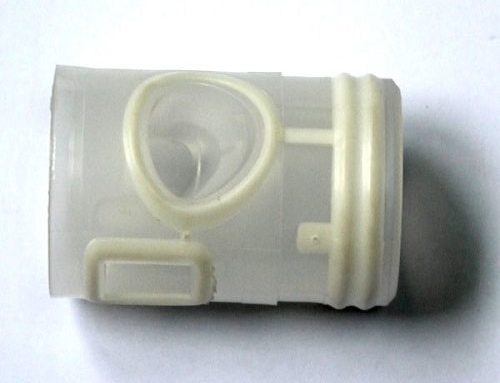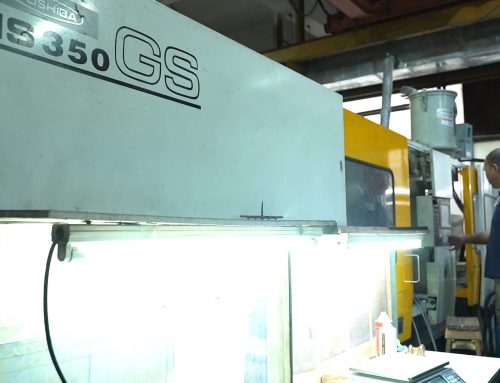Mold opening direction and parting line
Each injection moulding product must first determine its mold opening direction and parting line at the beginning of design to ensure that core slider mechanism is minimized and influence of parting line on the appearance is eliminated.
1.After injection moulding opening direction is determined, reinforcement ribs, buckles, protrusions and other structures of injection mold components are designed to be consistent with mold opening direction as much as possible to avoid core reduction, improve longer life of custom plastic mold.
2.After injection moulding opening direction is determined, appropriate parting line can be selected to avoid reverse buckle in the mold opening direction to improve the appearance and performance in plastic molding manufacturing.
Draft angle
1.Appropriate drafting angle can avoid product pulling. Smooth surface of draft should be ≥ 0.5 degrees, fine grain (sand surface) surface is greater than 1 degree, and rough grain surface is greater than 1.5 degrees.
2.Appropriate draft angle can avoid product top injuries, such as top deformation, burst.
3.When designing deep cavity structure, outer surface slope should be greater than inner surface slope as much as possible to ensure that mold core is not biased during injection,obtain a uniform product wall thickness, ensure material strength of opening parts of products.
Wall thickness
1.All kinds of injection mold components have a certain wall thickness range, generally 0.5~4mm. When wall thickness exceeds 4mm, it will cause cooling time to be more longer, resulting in shrinkage and other issues. Then we should consider changing product structure.
2.Uneven wall thickness will cause surface to shrink/pores and weld lines.
Reinforcement
1.Reasonable application of ribs can increase product rigidity and reduce deformation.
2.The thickness of ribs must be less than (0.5 ~ 0.7) T product wall thickness, otherwise surface will shrink.
3.Slope of rib should be greater than 1.5° to avoid head injury.
Rounded corners
1.If fillet is too small, it may cause stress concentration of product, resulting in cracking of product.
2.Too small fillet may cause stress concentration in the mold cavity, resulting in cracking of cavity.
3.Set a reasonable rounded corners, can also improve processing technology of custom plastic molds such as cavity can be directly processed with R knife milling to avoid low-efficiency electrical processing.
4.Different rounded corners may cause movement of parting line. We should choose different rounding or clearing angle according to actual situation.
Hole
1.Shape of hole should be as simple as possible, generally taking a round shape.
2.Same axial direction of hole and mold are the same can avoid core pulling.
3.When aspect ratio of hole is greater than 2, draft angle should be set. Diameter of hole at this time should be calculated according to size of small diameter (the largest physical size).
4.Length-to-diameter ratio of blind holes generally does not exceed 4 to avoild hole punching in plastic molding manufacturing.
5.Distance between hole and edge of product is generally larger than aperture size.
Core of injection moulding, slider mechanism.
1.When injection mold components cannot be demoulded smoothly according to mold opening direction, the core puller mechanism should be designed. Slider of core pulling mechanism can form a complicated product structure, but it is easy to cause defects such as seam stitching and shrinkage of injection mold components, and increase cost of mold to shorten life of mold.
2.When designing injection mold components, try to avoid core structure if there is no special requirement. For example, direction of hole axis and rib is changed to mold opening direction, and cavity core is used to penetrate.
Hinge
1.Using toughness of PP material, hinge can be designed to be integrated with product.
2.Film size as a hinge should be less than 0.5mm and keep even.
3.When molding an integral hinge, gate can only be designed on one side of hinge.
Inserts
1.Inserting inserts into injection moulding product can increase local strength, hardness, dimensional accuracy and set small threaded holes (shafts) to meet various special needs. At the same time, it will increase product costs.
2.Insert is generally copper, but also other metal or plastic parts.
3.Part of insert embedded in plastic should be designed to prevent rotation and pull out structure such as: knurling, holes, bending, flattening, shoulders and so on.
4, Plastic around insert should be properly thickened to prevent stress cracking of injection mold components.
5, When designing insert, should fully consider its positioning in the custom plastic molds (hole, pin, magnetic)
Logo
Product identification is generally set on the flat surface of product, and convex form is adopted. Set the mark at the surface where direction is as close as possible to mold opening direction to avoid the strain.




